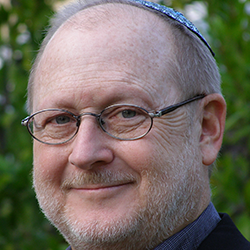The Spiritual Dynamics of Prayerby Rabbi Mike Comins  Prayer works quite differently for different people. Some pray to talk to God, others to listen for God. Others pray despite God. Some turn outward, others inward. Some like singing, others silence. Regular pray-ers learn what works for them. One person may spend some time in silence before opening the prayer book, another may stretch their muscles in a Yoga pose; a third might read a Torah commentary or a book on spirituality. Some people concentrate on the meanings of the Hebrew words; others may ignore the content and let the sounds, cadences and melodies of the prayers carry them forward. Some people pray every word of the liturgy; others might focus on a single line that jumps out at them; others close the prayer book and address God directly in their own words. Some do some of the above; others do most of the above. In my interviews for Making Prayer Real, I discovered that experienced pray-ers love the variety of prayer experience. They learn which techniques work best for them at different times. What should one do when one arrives at synagogue stressed? Which techniques work best when one needs to engage in introspection and do teshuvah? Which prayers command attention when one is outraged by injustice and suffering in the world? And when one takes the time to listen before speaking (or while speaking, or more likely, while singing or chanting a prayer) in order to discern the stirrings of the heart and which modality of prayer will best serve, another dynamic kicks in. The element of surprise! Often we hear the complaint: prayer is boring. We repeat the same words over and over. It is boring, if the words have no interaction with our hearts. But if we learn the art of connecting our yearning, aspirations, pain, gratitude, regrets and self-reflections to words of sprit—our own words or the words of the liturgy—we discover that repetition often helps rather than hinders. Generally speaking, the problem is not in the relevance of this or that part of the liturgy. Rather, most contemporary Jews lack the theory and the techniques for developing an inner life. That’s a topic for another article. But once a person learns the skills of a fruitful inner dialogue, the liturgy is like the score for the musician or the script for the actor, and personal prayer is like a paintbrush for the painter or a pen for the writer. Prayer is the heart’s enabler. In liturgical prayer, each reading is a performance, and each performance is an adventure. The score or the script does not change. But what the artist brings to the rehearsal is different every time. Thus, the performance is different every time. And often unexpected and surprising. But we are unaware, if we do not take the time and develop the skill to notice the changes within ourselves. Such discernment is straightforward mindfulness—paying attention to what is really happening in our hearts, rather than thinking of the next activity, or praying with a pre-conceived notion of what should or ought to be happening. When we discern the nuances in ourselves, we discern the nuances of prayer. Seeking to articulate and understand its own yearning, the heart speaks words to God (or divinity or the universe) by saying its own arrangement of the inherited, spiritual vocabulary or by reciting the words of the liturgy. Either way, when prayer is true, the words mirror our inner being; our inner being mirrors prayer. In this dialogue with the heart, prayer gives spirit voice; we discover ourselves through speaking to the Holy One. And sometimes—startled, humbled and awestruck—we realize that the Holy One has discovered us. © Copyright by Rabbi Mike Comins. You are welcome to reprint this article in your local newspaper, email list, Temple Bulletin or other communication if the following is appended: "This article is provided by the Making Prayer Real eJournal at RabbiMikeComins.com, where you will find outstanding resources on Jewish prayer."
0 Comments
Leave a Reply. |
Welcome to the Making Prayer Real eJournal! Edited by Rabbi Mike Comins and sponsored
by the Making Prayer Real Curriculum, the eJournal offers wisdom, tools, and resources on the art of Jewish prayer. Explore the eJournal by clicking on the topics below. Please share these resources with your friends!
Categories
All
|
 RSS Feed
RSS Feed